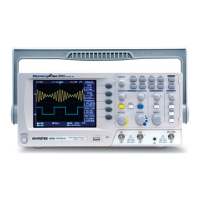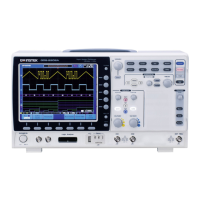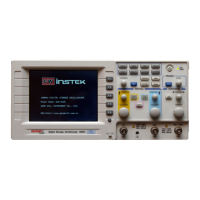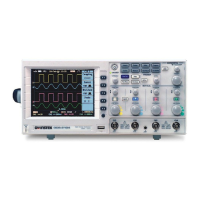SAVE/RECALL
87
SAVE/RECALL
The save function allows saving display images,
waveform data, and panel settings into the
oscilloscope’s internal memory or an external SD
card. The recall function allows recalling the
default factory settings, waveform data, and panel
settings from the oscilloscope’s internal memory
or an external SD card.
File Structures
Three types of file are available: display image, waveform file, and
panel settings.
Display image file format
Format
xxxx.bmp (Windows bitmap format)
Contents
The current display image in 234 x 320 pixels, color
mode. The background color can be inverted (Ink
saver function).
Waveform file format
Format
xxxx.csv (Comma-separated values format which
can be opened in spreadsheet applications such as
Microsoft Excel)
Waveform type CH1, 2
Input channel signal
Math
Math operation result (page55)
Storage location Internal
memory
The oscilloscope’s internal memory,
which can hold 15 waveforms.
GDS-1000A Series User Manual
88
External
SD/SDHC
card
An SD/SDHC card (FAT or FAT32
format) can hold practically an
unlimited number of waveforms.
Ref A, B
Two reference waveforms are used as
a buffer to recall a waveform in the
display. You have to save a waveform
into internal memory or an SD card,
then copy the waveform into the
reference waveform slot (A or B), and
then recall the reference waveform
into the display.
Waveform data
format
One division includes
25 points of horizontal
and vertical data. The
vertical point starts
from the center line.
The horizontal point
starts from the leftmost
waveform.
0
25
–25
25 50 75
The time or amplitude represented by each data
point depends on the vertical and horizontal scale.
For example:
Vertical scale: 100mV/div ( 4mV per point)
Horizontal scale: 100us/div (4us per point)
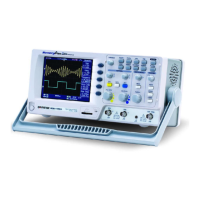
